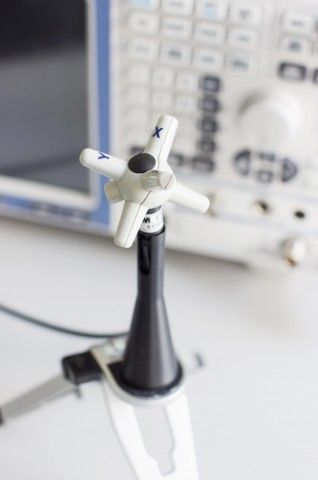ELECTROMAGNETIC COMPATIBILITY (EMC)
ELECTROMAGNETIC INTERFERENCE (EMI)
Electromagnetic compatibility is the way electrical and electronic systems, devices, and other electrical and electronic systems in the environment in which the devices are located, can operate safely and with expected efficiency.
EMI (Electromagnetic Interference) The electromagnetic interference, that is, the general name of the objects around the electromagnetic field, is affected. Devices both create this interaction and are affected. The interaction situations of the devices are called Immunity, and this interaction can be in two ways: radiation and transmission. Radiation emission is the transmission of the RF energy component as an electromagnetic field in an environment. Transmission emission is the transmission of the RF energy component electrically in an environment, i.e. over a cable. Radiation immunity is a measure of resistance of the electromagnetic energy of a device or system emitted by emission. The conduction immunity is the measure of resistance of the electromagnetic energy of a device or system to the effects of external cables, energy cables, communication cables or chassis.
They refer to the EN 61000-4 series standards, which explain how the tests should be carried out, whether they are the product family or the general standards.
Immunity test (EMC Test) is one of the electromagnetic compatibility (EMC) immunity testing and measurement techniques - Immunity to conducted disturbances, induced by radio-frequency fields IEC 61000-4-6 standard.
The purpose of the test is to control the immunity of the device against electromagnetic fields coming in or induced by the cable. Fields created by the diffusing devices cause the formation of RF voltages in long cables such as mains cables. Thanks to this test, these noise voltages are created and injected into the cables of the device under test. immunity is observed.
Conducted Emission (CE) Test is one of the Electromagnetic Compatibility (EMC) emission tests (EMC Test), where electromagnetic disturbances emitted by transmission of electrical and electronic devices into the environment.
The Purpose of the Test; In the transmission test by transmission, the frequency range may vary according to the product standard. While the frequency range of some product standard is at 9kHz-30MHz, the frequency range of different standards is 150kHz-30MHz. In these frequency ranges, the electrical noise magnitudes of the device on the supply cables are measured. Thus, the level of electrical noise transmitted by the device in the supply cable is tested. at this level, it should be below the standard limit values.
Radiated Emission (RE) test; Electromagnetic Compatibility (EMC) emission tests (EMC Test), where electromagnetic disturbances emitted by radiation from electrical and electronic devices are measured.
Purpose of the Test; In the radiation test by means of radiation, the level of electric field intensity emitted by the product is measured at a certain distance. It is done with the help of a special antenna and receiver. The measured levels must be below the standard limits.
Radiated, radio-frequency, electromagnetic field immunity test specified in IEC 61000-4-3 standard is one of the Electromagnetic Compatibility (EMC) immunity tests (EMC Test).
Purpose of the Test; In radiant, radio frequency, electromagnetic field immunity test, a sine wave of 1 kHz and an electric field with 80% amplitude are applied for horizontal and vertical positions from four sides of the product and the performance of the device is observed.
Electrostatic Discharge (ESD) Test specified in IEC 61000-4-2 standard is one of the Electromagnetic Compatibility (EMC) immunity tests (EMC Test).
Purpose of the Test; Electrostatic charge discharge is the result of people storing the electric charge as a result of contact with synthetic carpets, fabrics or wool sweaters. Electrostatic charge stored in the human body may affect the operation of electronic products as a result of a direct or indirect effect. No performance is observed in its performance.
Electrical fast transient/burst immunity test specified in the IEC 61000-4-4 standard is one of the Electromagnetic Compatibility (EMC) immunity tests (EMC Test).
Purpose of the Test; Electrical fast transient/burst immunity test is to simulate short-term transient voltage bursts caused by switching off loads such as AC motors or turning relays on. These transient voltage bursts affect their operation rather than damaging electronic devices.
Surge immunity test in IEC 61000-4-5 standard is one of the Electromagnetic Compatibility (EMC) immunity tests (EMC Test).
Purpose of the Test; It simulates overvoltages induced in the immune test against sudden spikes. Since it has high energy in sudden spikes, it may cause damage to unprotected devices.

